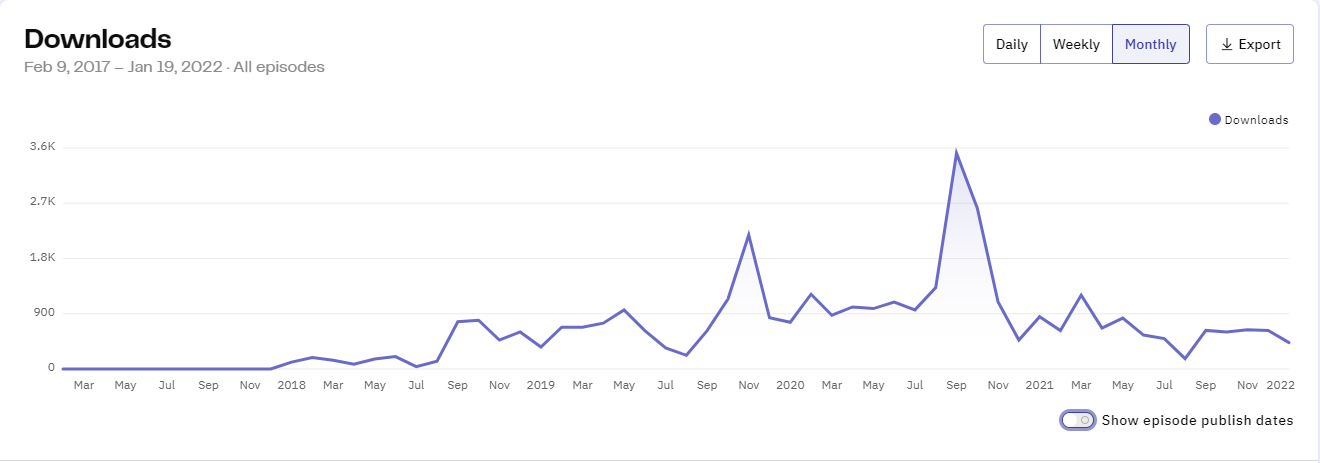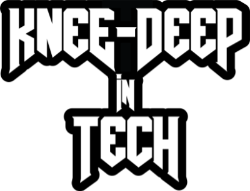The Tech of Knee-Deep in Tech, 2022s edition - part 4
In part 1 of this blog series I outlined the gear we use to record the podcast. The second part was all about actually recording content. The third was a wall of text on post-processing. After getting back from Oslo and the Nordic Infrastructure Conference, it is now time to finish off the series with an outline of how I publish and push the podcast on the different social media platforms.
Base camp
After working off the blog for a bit, we started using the podcasting platform Pippa in January of 2018. (Pippa was subsequently absorbed into Acast). In essence we upload the MP3 file to Acast, set the metadata for the episode and Acast takes care of the rest for us. This involves registering our podcast with iTunes, Spotify and all the other major podcasting aggregators. It’s not free – we’re using the $14.99 / month “influencer” plan. While we’re not using most of the other features of Acast (website, etc.) the analytics part is nice. I’m still not convinced that the stats are correct, though. I can’t seem to figure out how they are computed either (what triggers a count of an episode?), but they’ll do for now:

As you can see, podcasting is not a 100-meter sprint – it is more of a marathon. We’ve suffered from the effects of the pandemic as well - as the world turned online there was an explosion of content. This has resulted in a general loss of listeners all across the podcasting industry. We still have no idea what happened in September of 2020. We’re now averaging just under 850 unique listens per month - not bad for a project that neither of us really expected to survive the summer, let alone still go strong five years later!
I generally schedule the episode to go live the next weekday at 11.30 CET. This seems to be a good time for the rest of the world to pick it up. Surprisingly enough, most of our listeners are in the USA. Perhaps not as surprising is that the number of listeners we have on Spotify is around 5 per day. Despite Spotify wanting to be a podcast powerhouse, it has some ways to go.
Social media
With the file on Acast it’s time to tell the world. Cathrine Wilhelmsen explained the finer parts of handling social media to me. This led me to (try to) create images for all episodes. In reality, “all episodes” have turned into “episodes with guests”. Tweets and social media posts with pictures tend to have a better reach, and reach is the goal.
We start by creating a post on the blog. This is where we actually link to Acast. We have also thrown in links to Spotify and iTunes for good measure. All our different media outlets all link back to the blog, further driving traffic there.
Cathrine also told me to set up a new Twitter account for Knee-Deep in Tech (@KneeDeepInTech). This account is responsible for tweeting about everything we do with the podcast. By adding a secondary account to Twitter I don’t have to log out of my normal @arcticdba account and into the @KneeDeepinTech one. In Tweetdeck it’s even simpler – just choose which of your connected accounts that will do the tweeting and off you go! This way @KneeDeepinTech will tweet the new episode, and all of us hosts will retweet with a comment. That way we increase our reach even further.
Another way of scheduling social media posts is by using Buffer (https://www.bufferapp.com) This is a great tool for scheduling Twitter, LinkedIn, Instagram or Facebook. With Buffer I get a good overview of what is happening in my small social media empire the days ahead. The only issue I’ve found with it is that it sometimes doesn’t do linking qite as I would have liked.
With the episode going live at 11.30 CET, I tend to schedule the tweets, LinkedIn post and the blog post a minute later. This way I’m sure that the episode has been release correctly before anything starts linking to them.
Conclusion
As I said earlier, a podcast is not a sprint. I think of it as a long, mostly uphill marathon. It is a TON of work to figure out content, hunt down guests, do post-processing and finally share the result. It is also a lot of fun. I’ve learned so much from doing this for five years – not only about audio, but all the amazing conversations I’ve had with the guests we’ve had on. Getting to do this podcast with two of my closest friends is absolutely fantastic. Expect more fun content during 2022.
We’ll keep on doing it as long as it’s fun!
